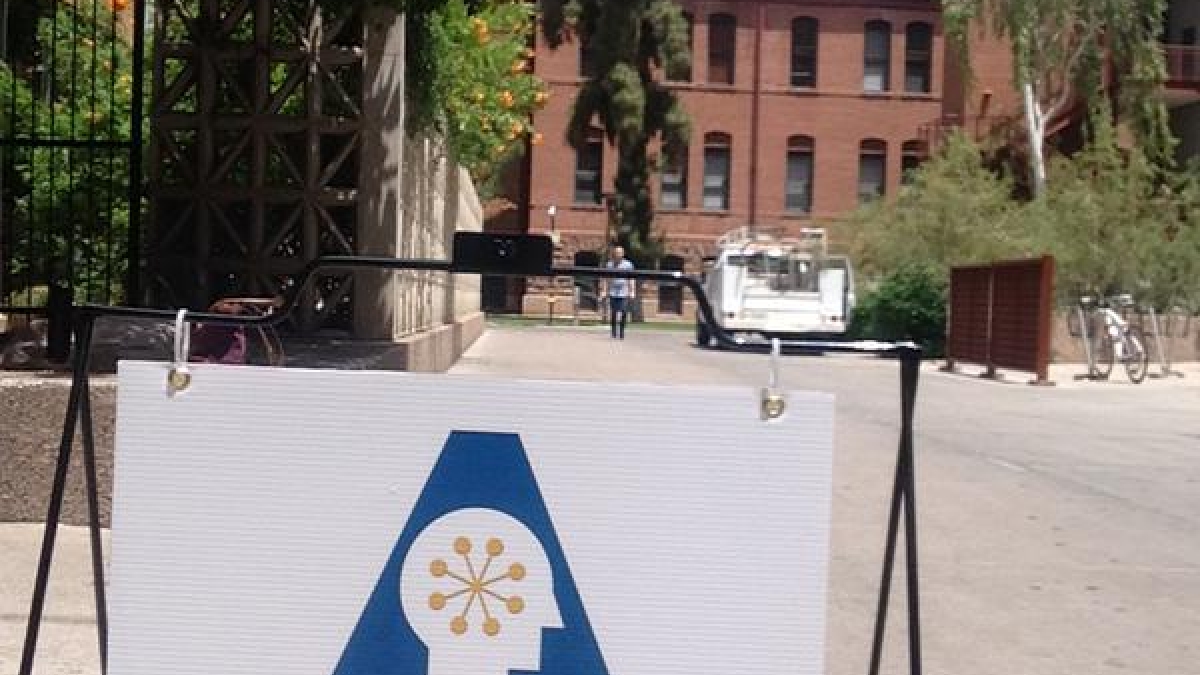Arizona leaders share latest Alzheimer's research advancements

More than 200 participants gathered last week at Arizona State University’s Old Main to share the latest clinical research discoveries and advancements at the 2015 Arizona Alzheimer’s Consortium’s Annual Scientific Conference.
“This is an incredibly important group gathering here today working on Alzheimer’s,” said William Petuskey, associate vice president and professor in the Office of Knowledge Enterprise Development at Arizona State University. “The devastating effects of Alzheimer’s impact everyone at some point, and that’s why solutions are only going to be found through your individual and collective efforts.”
More than 5 million Americans suffer from Alzheimer’s. Barring any significant treatment breakthroughs, the looming burden could be as high as 16 million by 2050 at an annual cost of $1.2 trillion that could overwhelm the U.S. health-care system. This has profound implications for Arizonans – with a population of more than 1 million people older than 65 today and an estimated 2.4 million by 2050.
Since 1998, the Arizona Alzheimer’s Consortium goal has been to make progress in the field by a strength-in-numbers approach – fostering collaborations and funding opportunities between clinical partners and Arizona’s research universities and institutes.
More than 150 researchers from seven principal institutions participate: Arizona State University, Banner Alzheimer’s Institute, Banner Sun Health Research Institute, Barrow Neurological Institute, Mayo Clinic Arizona, Translational Genomics Research Institute (TGen) and the University of Arizona.
“Together, we have made important contributions in Alzheimer’s research, outreach and care,” said Dr. Eric M. Reiman, director of the Arizona Alzheimer's Consortium, the Banner Alzheimer’s Institute and University Professor of Neuroscience at ASU. “Thanks to so many of the people here who have made our state a destination for the fight against Alzheimer’s disease.”
At the conference, keynote speaker Dr. William Jagust, of the Lawrence Berkeley National Lab, gave a tour de force perspective from decades of research insights aimed at elucidating the underlying causes of Alzhemier’s.
“My lab works at the intersection of normal aging and Alzheimer’s disease," he said. "It’s at the borderline that things are happening and changing.”
Despite progress made identifying known genetic risk factors such as the APOE4 gene variant, brain-imaging studies that reveal telltale signs in the brains of those afflicted – including beta-amyloid plaques and tau tangles – show that the picture remains vexingly complicated.
“In normal aging, some people are amyloid negative and others amyloid positive,” Jagust said. “You couldn’t tell people apart if you talked to them, or did cognitive testing.”
(Beta-amyloid is a protein fragment that, in a healthy brain, is broken down and eliminated. With Alzheimer's disease, the fragments accumulate into insoluble plaques between nerve cells in the brain. As for tau tangles – in a healthy brain, a vital cell transport system carries nutrients and other key materials along tracks that the tau protein helps keep straight. In a brain afflicted by Alzheimer's, the tau protein is abnormal and forms a tangle, and the structures collapse, cutting off the cells' nutrients.)
Alzheimer’s is known to be present at stages even before people get sick, so to untangle Alzheimer’s progression, much more progress needs to be made in understanding the complex interplay between normal aging and Alzheimer’s to reveal its secrets, experts say.
Consortium scientists, using their strengths in brain imaging, behavioral neuroscience and clinical therapeutics, are examining the role of beta amyloid and tau in Alzheimer’s pathology, as well as the metabolic decline and brain atrophy that lead to cognitive decline and dementia.
Despite new understanding, clinical trial after clinical trial have all failed, either because the treatments were too late to reverse the damage or because they simply may not have had the right dose or reached the right target for an individual.
But headlines were made recently using a new immunotherapy approach that reversed memory problems. Reiman’s team has been spearheading a clinical trial underway for a community in Colombia who are victims of an early-onset form of Alzheimer’s that begins in patients' 20s. The idea of the trial is to treat people who are carriers of the early-onset mutation with the drug crenezumab before symptoms appear, and prevent the disease.
The day’s conference talks and more than 80 research poster presentations were a premiere opportunity for clinical investigators, university researchers and a talented new generation of students to exchange information, make new connections and dream up new high-impact ideas and projects.
Highlights included updates on:
• The Sangre Por Salud (Blood for Health) Biobank, led by Mayo Clinic, to identify genetic risk factors for Latinos.
• The Alzheimer’s Prevention Initiative, led by Banner Alzheimer’s Institute, to evaluate the most promising treatments and clinical trials.
• Variations in hormone levels and the effects on cognitive and brain aging, led by ASU.
• The role of aerobic fitness and healthy aging led by the University of Arizona.
• The role of molecular and DNA profiling to improve the clinical diagnosis in patients with Alzheimer’s or Parkinson’s disease.
• Improving drug treatment by getting more molecules to cross the blood-brain barrier.
• Discovering and identifying other important molecules that may be implicated in Alzheimer’s pathology.
The consortium continues to make major contributions to the early detection of Alzheimer’s and the scientific understanding of the aging mind and brain. In the future, the consortium hopes to expand research and clinical initiatives to advance the fight against Alzheimer’s disease to serve the needs of Arizona patients, families and underserved communities desperate for new advances.
Through their dedicated efforts, the consortium has become a national model for statewide collaboration on Alzheimer’s research to address the urgent societal problems of the aging brain in more effective ways.
“There is recognition by national leaders in the field that there is something special going on in Arizona,” said Reiman.
For those who wish to learn more about the Arizona Alzheimer’s Consortium, a public conference will be held on June 12 at the Mesa Convention Center.